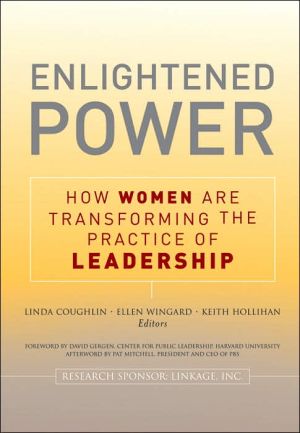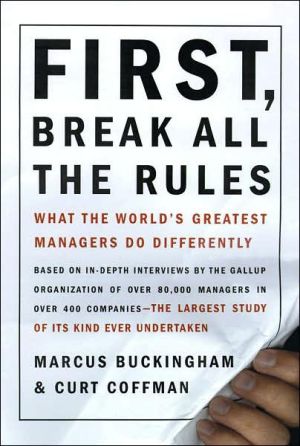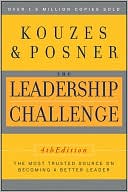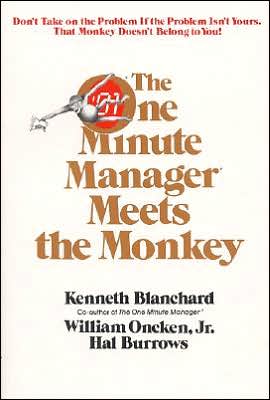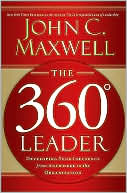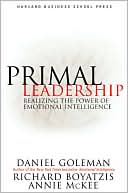Enlightened Power: How Women Are Transforming the Practice of Leadership
The "Best of the Best" Reveal the New Dimensions of Power for Today's Women Leaders\ Nancy J. Adler Carol Anderson Stacy Blake-Beard Susan Brady Barbara Corcoran Linda Coughlin Cynthia Cunningham Riane Eisler Gail Evans Eileen Fisher Helen E. Fisher David Gergen Michele Gravelle Erin Gruwell Marian L. Heard Sally Helgesen Keith Hollihan Kira Hower Swanee Hunt Herminia Ibarra Marilyn King Peggy Klaus Rear Admiral Deborah A. Loewer, USN Barbara McMahon Pat Mitchell Shelley Murray Tricia Naddaff...
Search in google:
How are women transforming the practice of leadership in the 21st century? Enlightened Power is a first-of-a-kind book that answers this question—and forever changes the traditional notions involving women in leadership.The book features the accumulated wisdom of 40 influential men and women who represent the most compelling voices in the field, including: Dynamic business leaders such as Eileen Fisher (founder, Eileen Fisher, Inc.), Barbara Corcoran (founder and chairman, The Corcoran Group), and Pat Mitchell (president and CEO, PBS)Trailblazing women from other arenas such as politics (Ambassador Swanee Hunt), the military (Rear Admiral Deborah A. Loewer, USN), and sports (U.S. Olympian Marilyn King)Renowned thought leaders such as Riane Eisler, Rayona Sharpnack, Sally Helgesen, Peggy Klaus, Bruce Patton, Nancy J. Adler, and Gail EvansLeading-edge academics, activists, executives, entrepreneurs, and practitionersEach provides a unique perspective on how women are transforming leadership in business, the media, education, politics, and culture across the nation—and around the world. Tapping into the richness of the annual Women in Leadership Summit presented by Linkage, Inc., Enlightened Power contains stories of vulnerability and strength, authenticity and compassion, courage and conviction, and integrity and impact. Through these stories, the authors reveal their "enlightened power"—and provide both inspiration and practical wisdom for women leaders who want or need to bring their own enlightened power forward.Women today—occupants of the corner office, emerging leaders, entrepreneurs, and leaders in nonprofit and noncorporate disciplines—are all seeking ways to redefine and leverage power so they can achieve personal fulfillment, extraordinary business results, and positive social change. Enlightened Power is the groundbreaking book that shows them the way.
Enlightened of Power: How Women are Transforming the Practice of Leadership\ \ By Lin Coughlin \ John Wiley & Sons\ ISBN: 0-7879-7787-X \ \ \ Chapter One\ THE ECONOMICS OF THE ENLIGHTENED USE OF POWER \ Riane Eisler\ Ours is an exciting and challenging time. It is a turbulent time of major problems but also of major opportunities: a period of rapidly changing consciousness when, for the first time in recorded history, women can be leaders in shaping our future.\ Technological and economic changes over the last centuries opened the door for questioning much that was once taken for granted-from the "divinely ordained" right of kings and princes to absolute authority over their "subjects," to the "divinely ordained" right of men to absolute control over women and children. These challenges to traditions of domination are part of a shift from authoritarian family and social structures to structures that support more democratic and egalitarian relations. And an integral part of this shift has been a view of leadership no longer based on control, coercion, and disempowerment but on inspiration, facilitation, and empowerment. This chapter examines these two different ways of defining and exercising power from the perspective of two models of social organization: the domination model and the partnership model. It shows that changes in our concepts of leadership are directly related to changes in gender roles and relations. It also shows why the entry of women into positions ofleadership is an index of fundamental change in social structures and values-and why raising women's status and bringing traits and activities stereotypically associated with femininity into the workplace and society at large are fiercely resisted by those who believe that top-down rankings of domination are natural and moral.\ The Domination and Partnership Models\ Examining human societies cross-culturally and historically, I became aware that to better understand and more effectively solve our global problems, we have to go beyond conventional conceptual frameworks-as in today's mantra of "thinking outside the box." Old social categories, such as right or left, religious or secular, Eastern or Western, and industrial or pre- or postindustrial, do not describe whole social systems. None of them describes the totality of a society's family, educational, religious, political, and economic institutions and its guiding system of values. And all fail to recognize the enormous impact of gender roles and relations on both women's and men's lives, as well as on our beliefs, families, education, religion, economics, and politics.\ When I began to examine societies from a perspective that takes all this into account, I saw that underneath the great surface diversity of human societies-transcending differences of time, place, technological development, ethnic origin, and religious orientation-are two underlying configurations. I call them the domination model and partnership model of social organization.\ Societies such as Khomeini's Iran, Hitler's Germany, Stalin's Soviet Union, and the Masai of nineteenth- and early twentieth-century Africa are very different. But they all have striking commonalities. They are characterized by strong-man rule in both the family and the state or tribe, rigid male dominance, and a high degree of institutionalized violence, from child and wife beating to chronic warfare. They are also societies where so-called masculine values, such as toughness, strength, conquest, and domination are given high social and economic priority, as in the emphasis on weapons and wars. So-called feminine values, such as caring, compassion, empathy, and nonviolence, are, along with women, relegated to a secondary, subservient sphere cut off from the "real world" of politics and economics. These four characteristics-strong-man rule, rigid male dominance, institutionalized violence, and the devaluation of women and the "feminine"-are the core configuration of the domination model.\ This model is marked by well-defined in-groups and out-groups. Social differences-beginning with the most fundamental difference in our species, that between women and men-are equated with superiority or inferiority, with dominating or being dominated. In the partnership model, by contrast, difference is valued, as in the ideal of the more pluralistic society now gaining currency.\ In partnership-oriented societies, whether in the family, workplace, or society at large, so-called feminine qualities and behaviors are not only held in high esteem but also incorporated into the operational guidance system. There is equal partnership between women and men, a more democratic and egalitarian social structure, and less built-in violence, as it is not needed to maintain rigid rankings of domination.\ The partnership configuration also transcends differences of time, place, and level of technological development. It can be found in technologically primitive tribal societies, such as the Teduray of the Philippines; agrarian societies, such as the Minangkabau of Sumatra; and technologically advanced industrial societies, such as the Nordic nations. In the Nordic countries, attempts to create a more equitable economic system resulted not in a dominator form of communism ruled from the top (as found in the former Soviet Union) but rather in a democratic society with a mix of free enterprise and welfare state. Here we also see a strong interest in nonviolent means of conflict resolution, as well as systemic attempts to create a more gender-balanced society-one where women, along with stereotypically feminine values, are not relegated to an inferior status and excluded from the public world.\ If we reexamine modern history from this new perspective, we see that underneath its many complex currents and crosscurrents lies a powerful movement toward a partnership social organization, countered by strong resistance. We see that all the modern progressive movements have challenged different forms of domination backed by force and fear. This challenge is the common thread in the eighteenth- and nineteenth-century rights of man, antislavery, antimonarchist, socialist, pacifist, and feminist movements. The twentieth-century anticolonial, antiwar, participatory democracy, women's rights, and economic justice movements are also not isolated phenomena. They are all part of a much larger movement: the movement to create a world in which principles of partnership rather than domination and submission are primary. And a key aspect of this movement is the transformation of gender roles and relations-and with this shift, a redefinition of power and leadership in more stereotypically feminine ways.\ Women, Men, and Power\ I want to emphasize that when I say "stereotypically," I mean just that. There are obvious differences between women and men. But much that is considered masculine and feminine is our heritage from earlier times when women were strictly barred from positions of leadership and power.\ Another part of this dominator heritage is the belief that a fear-based, institutionally insensitive, and all too often abusive and dehumanizing leadership and management style is a requisite for social order and economic productivity. The good news is that this leadership and management style is increasingly recognized as an impediment rather than a spur to social order and economic productivity.\ Today's management and organizational development literature proposes that, particularly in the postindustrial knowledge economy, a new leadership and management style based on respect, accountability, and empowerment is needed. We are told that effective leaders and managers are not cops or controllers whose commands must be unquestioningly obeyed, but rather are people who facilitate, inspire, and elicit from others their highest productivity and creativity.\ Such a leadership and management style models caring rather than coercion. Although some leaders-male and female-have always recognized the effectiveness of this leadership style, it is becoming more prevalent today because of the rising status of women, and thus of qualities and behaviors associated with femininity, such as nurturance and empathy.\ Studies show that precisely because women's socialization was not designed for them to function in the "men's world," women today bring to the workplace some of the very skills needed if it is to be fundamentally transformed. For example, Leonard Greenhalgh conducted a study of women and men in simulated negotiations sessions at the Dartmouth School of Business Administration and found that women tend to be more flexible, more empathic, and more likely to reach agreement. When a man visualizes a negotiating situation, he sees it as a one-shot deal to win or lose, like a sport or game, Greenhalgh states. A woman sees it as part of a long-term relationship. And because most business situations involve long-term relationships, the "female" approach is more productive, he concludes. Or, as John Naisbitt and Patricia Aburdene put it in their book Re-Inventing the Corporation, as the manager's role shifts to that of a teacher, mentor, and nurturer of human potential in the information society, there is even more reason for corporations to take advantage of women's managerial abilities, because these people-oriented traits are the ones women are socialized to possess.\ The problem, however, is that if women are forced to operate in domination-style structures, they are under tremendous external and internal pressure to "be more like men." As noted by Alice Sargent and Ronald Stupak, women-particularly as middle managers, but sometimes even when they reach the top-will have to "step into the shoes of men."\ This dynamic too is our heritage from earlier times, when the occasional female leader such as a Queen Elizabeth or Catherine the Great by and large stepped into leadership positions as the widows, daughters, or mothers of men. In business, too, management was a male preserve, with the occasional female top executive figuratively stepping into the shoes of men. In other words, power was synonymous with characteristics (such as strength, toughness, control, and decisiveness) that are stereotypically considered masculine.\ This view of power as a male's power to control people, be it for ill or good, is appropriate for a dominator social organization, which orders human relations primarily in terms of rigid rankings-man over man, man over woman, nation over nation, and man over nature. Economic relations in this model of society also follow this pattern. Just as women's and children's labor was by law and custom the property of the male head of household, the labor of slaves (and later of serfs) was said to be due their owners or lords. Even later, in the early stages of the Industrial Revolution, with the shift from a primarily agrarian to a manufacturing economy, the relations of workers and bosses tended to follow this mold. Sweatshops, where women, men, and children worked from dawn to dusk in unsafe and oppressive conditions, were accepted as "just the way things are." The use of force by industrialists against those who sought to organize workers was often condoned, and at times supported by government leaders.\ As we move toward the partnership end of the partnership-domination continuum, these practices are no longer acceptable. But old habits and beliefs linger on-particularly when it comes to the roles and relations of women and men. Indeed, the movement toward partnership has been resisted every inch of the way. And this resistance is particularly fierce when it comes to "women's issues."\ Those trying to push us back to the "good old days" when most men and all women still "knew their place" in rigid rankings of domination recognize the social importance of gender roles and relations. Be it Khomeini in Iran, the Taliban in Afghanistan, or the rightist-fundamentalist alliance in the United States, these people give top priority to "getting women back into their traditional place"-a code word for a subordinate place.\ Yet many people who want democracy and equality still view "women's issues" as secondary-failing to recognize that gender equity is a core element of the shift to a more humane, productive, and prosperous way of life for all.\ Raising Women's Status\ A study using data compiled by the United Nations and other international agencies from eighty-nine countries compared measures of the status of women with quality-of-life measures such as infant mortality, human rights ratings, and percentage of the population with access to health care. This study, conducted by my colleagues and me for the Center for Partnership Studies, found that the status of women can be a better predictor of quality of life than gross domestic product (GDP), the conventional measure of a nation's economic development.\ For example, Kuwait and France had almost identical GDPs, but infant mortality, one of the most basic measures of quality of life, was twice as high in Kuwait. Similarly, the GDP of Finland and Singapore were almost identical. But the maternal mortality rate in Singapore, where the status of women is much lower than in Finland, was more than double that of Finland, a society where, as in other Nordic nations, women have made strong gains.\ This study, "Men, Women, and the Global Quality of Life," statistically verifies that there is a strong correlation between, on the one hand, such indicators of gender inequity as a substantially lower literacy rate for females than for males, high maternal mortality, and low female participation in government and, on the other, indicators of a generally lower quality of life for all, such as high infant mortality, a high number of refugees fleeing the country, and a high ratio of GDP going to the wealthiest as opposed to the poorest 20 percent of the population.\ This study illustrates the value of gender-specific research. It shows that economics cannot be understood, or effectively changed, without attention to other core cultural components-and that a central cultural component is the social construction of gender roles and relations.\ Nordic nations such as Finland, Sweden, and Norway are particularly interesting in connection with what happens as women make strong gains. In a very short time during the twentieth century these nations changed from poor, famine-ridden countries to prosperous, creative economies. Why? Because their policies give value and fiscal support to the stereotypically feminine work of care-giving. Such measures as universal health care, child-care allowances, elder care, and paid parental leave helped produce the higher-quality human capital that transformed them into prosperous nations. These nations always rank on the top of the U.N. Human Development Reports. Even beyond that, Finland was ahead of the much wealthier United States in the 2004 Global Competitiveness ratings. And of course women in the Nordic nations occupy a far higher percentage of political leadership positions than anywhere else in the world: they make up approximately 40 percent of legislators.\ These nations also pioneered the first peace studies courses. They pioneered laws against physical punishment of children in families. They pioneered a strong men's movement to disentangle male identity from violence. They also pioneered what we today call industrial democracy: using teamwork in factories rather than turning human beings into mere cogs in the industrial machine.\ None of this is random or coincidental. It is part of the cultural configuration characteristic of the partnership rather than domination model: a configuration in which the higher status of women is central. What happens is that as the status of women rises, so too does the status of traits and activities stereotypically associated with the feminine: soft rather than hard values, empathy, caring, nonviolence-and men then find it more possible to embrace these values without feeling threatened in their status.\ In short, how a society structures the relations between women and men is of profound personal, social, and economic significance. It is of key importance in how leadership and power are conceptualized and exercised. It is also an important factor in shifting the architecture of the workplace from top-down hierarchies of domination to what I call hierarchies of actualization.\ (Continues...)\ \ \ \ \ Excerpted from Enlightened of Power: How Women are Transforming the Practice of Leadership by Lin Coughlin Excerpted by permission.\ All rights reserved. No part of this excerpt may be reproduced or reprinted without permission in writing from the publisher.\ Excerpts are provided by Dial-A-Book Inc. solely for the personal use of visitors to this web site. \ \
Foreword : women leading in the twenty-first centuryIntroduction : the time is now : a leader's personal journey11The economics of the enlightened use of power212The power of shifting context : becoming a contextual leader393Deeper power554Failing well : how to be vulnerable and strong695Work as love made visible : finding your passion796The inextricable link between mentoring and leadership1017Influencing for impact1118The natural leadership talents of women1339Are we looking after each other? Women leaders winning the game14310With children : leading an integrated life15111Cultivating the still point : the power of reflective leadership16912Our many possible selves : what do we want?19913Women building businesses : courage to find your way21714Taking risk : lessons from an unconventional career arrangement23115Trafficking in trust : the art and science of human knowledge networks24316Enlightened power through difficult conversations26717Crossing over : leadership that makes others want to follow28918Leading authentically : new research into the link between the essential self and leadership effectiveness30119Completing the circle : the business imperative for diversity31720Good girls don't brag, do they?33121An unwavering stand for results : a leader's perspective33922Leading beyond boundaries : the courage to enrich the world35123The sustainable advantage37124Snapshots of a corporate radical38125The socially responsible leader39526Inclusive transformation : a different power41127Pushing open the "door of opportunity" : women in our armed forces43928Olympian thinking : producing extraordinary results in our world44929Being a leader of leaders46330Aren't we the dream?473Afterword : changing the nature of power485
